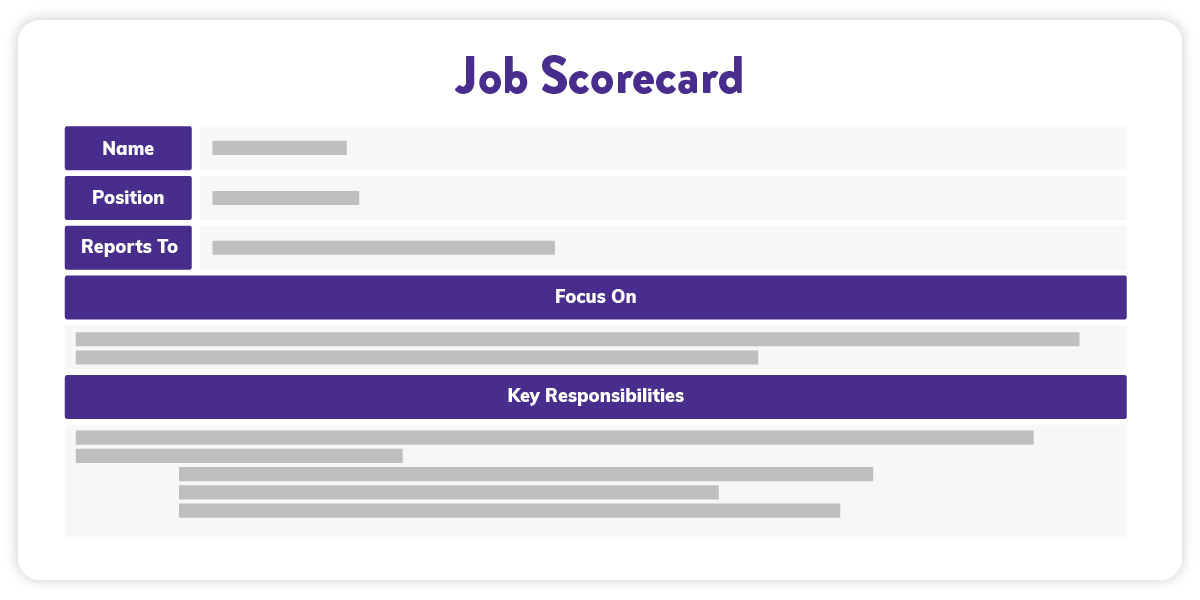
Articles
3 Tools To Set Clear Expectations With New Hires
April 13, 2021

Starting a new job can be overwhelming and often chaotic. You're trying to understand the company’s culture, team, communication best practices - all while ramping into a new role. It's a lot! And it's that much harder if you don't know what's expected of you.
Yet, about half of employees worldwide don't actually know what is expected of them in their role. Because most companies think a job description plus a completed employee onboarding process means expectations are set. But (half the time) that's not the case!
So, we've invested substantial time and resources into setting all our new hires up for success from Day 1. But how, you ask?! By setting them up with 3 tools on their first day:
1. Job scorecard
Job scorecards offer a high-level snapshot of a role. This includes main focuses, key responsibilities, and quantifiable success metrics.

These metrics can be anything from increasing organic traffic to response time to customer satisfaction. Just as long as employees can easily and accurately measure them.
That way, employees know what to do as long as they remain in that role. And they can hold themselves accountable, so there's no room for surprises come review time.
And when an employee gets promoted, they get a new scorecard. One that's updated with their new focuses, responsibilities, and metrics. So, they always know what's currently expected of them.
👉 Check out what our People Ops Generalist scorecard looks like. Or, steal the job scorecard template to create your own.
2. 30-60-90
Scorecards on their own can feel like going from zero to 100 in a matter of seconds. And without further directions, new hires might not know if they're on the right track.
So, a 30-60-90 outlines key projects, learnings, and outcomes for the first 3 months of a new role. And it creates an actionable path to complete the projects, using the 30-day, 60-day, and 90-day marks as milestones. That way, new hires should know what to focus on – without asking again and again.

Have your existing team outline these goals before your new hire starts, and ask the direct manager to present them to the new hire on their first day. Just be sure to clarify how success will be measured (such as by getting all these projects done in the scheduled timeline).
These goals should range from one-day tasks on the front end to a project that will take a few weeks on the back end. This way, your new hires feel like they are instantly contributing (because they are)! And they can track how far they've come in learning their new role.
We even check in with new hires every time they reach one of these milestones to talk about how it's going, what's working, and any obstacles.
👉 Start building your 30-60-90s with our free template.
3. Trainual
Yep, we use our own product. Like, a lot.
In the first few weeks on the job, we have all our new hires go through our onboarding materials, health insurance 101, and DEI policies. Then, they dive into content specific to their new role and responsibilities.

After completing the assigned content, new hires should have all the information to hit all their 30-60-90 goals and continue growing in their role!
You might be thinking, “wow, this is a ton of preparation for every single person that joins the team!” And you’re right - it is.
But it’s worth it because we know the upfront investment pays dividends when our team knows what to do and how to do it. And they have a tool (AKA Trainual) to lean on when they forget best practices and how-tos!
Similar Blog Posts











